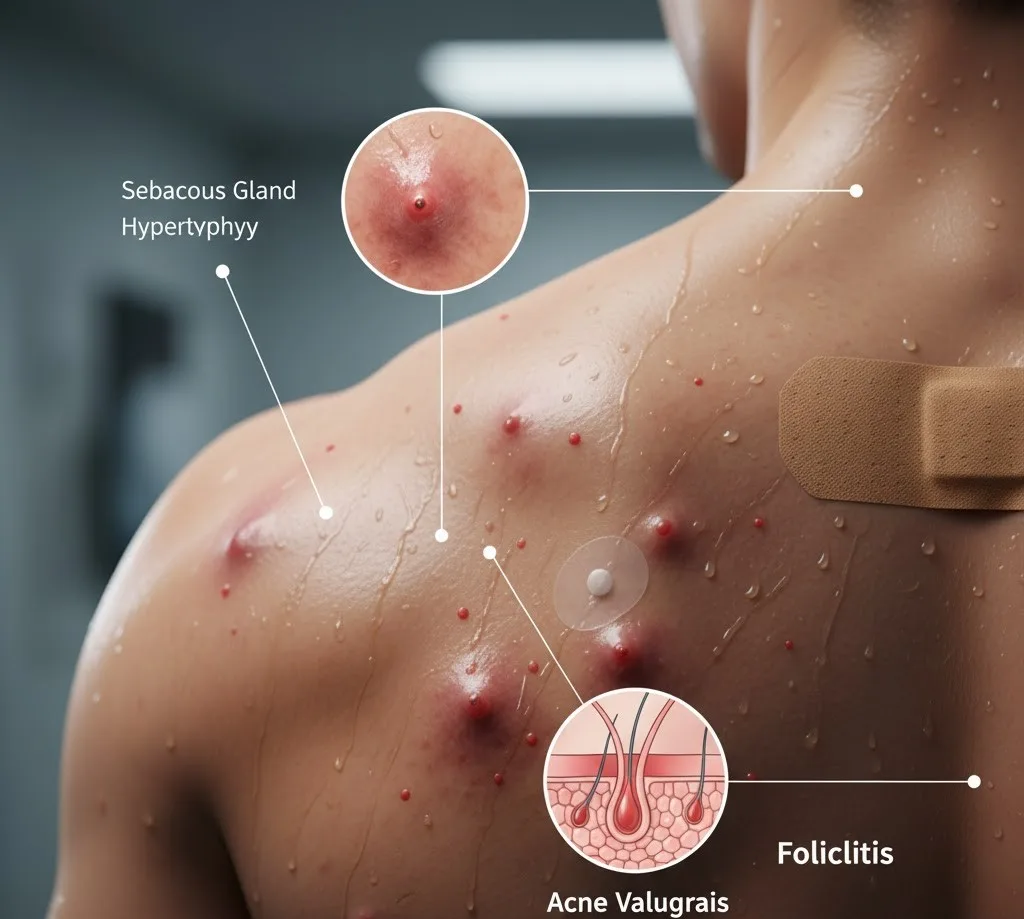In the world of sports, an athlete's focus is often on muscle, endurance, and strategy. However, the health of their largest organ – the skin – can play an unexpectedly crucial role in their performance and overall well-being. A recent query in Persian highlighted how certain medications can induce significant dermatological changes, raising an important question for athletes: How might these skin-deep issues affect the physically demanding life of a professional or amateur sportsperson?
The conversation detailed a user with oily skin inquiring if a particular drug was responsible for their skin conditions. The answer was a resounding "yes," followed by a list of potential side effects:
-
Sebaceous Gland Hypertrophy: Enlargement of the skin's oil-producing glands.
-
Increased Skin Oil (Sebum) Levels: Leading to more noticeable oiliness.
-
Increased Population of Acne-Related Probiotics and Staphylococcus aureus Bacteria: A shift in skin microbiome that can predispose to infection.
-
Acne Vulgaris: The common form of acne.
-
Folliculitis: Inflammation or infection of the hair follicles.
While these might seem like mere cosmetic concerns to some, for athletes, such conditions can translate into tangible performance detractors and significant discomfort.
The Athlete's Skin: A Battlefield
Athletes are already predisposed to various skin conditions due to their lifestyle:
-
Increased Sweating and Friction: Constant moisture and rubbing from clothing and equipment (helmets, pads, shoes) create ideal environments for bacterial and fungal growth, exacerbating conditions like folliculitis or fungal infections.
-
Frequent Showers and Harsh Cleansers: While necessary for hygiene, these can strip the skin's natural barrier, leading to dryness or, paradoxically, increased oil production as the skin tries to compensate.
-
Exposure to Elements: Sun, wind, and varying temperatures can irritate the skin.
-
Close Contact Sports: Increases the risk of transmitting skin infections.
When a medication adds to this challenge by altering skin physiology, the consequences can be magnified.
How Medication-Induced Skin Issues Affect Performance
Imagine a competitive swimmer dealing with severe folliculitis on their back, making every stroke painful. Or a basketball player struggling with widespread acne, irritated by sweat and jersey friction, affecting their focus during a critical game.
-
Pain and Discomfort: Enlarged sebaceous glands, severe acne, and especially folliculitis can be incredibly painful. This constant discomfort can be a significant distraction, impacting an athlete's concentration, sleep quality, and overall mood – all vital for peak performance.
-
Increased Risk of Infection: An imbalance in skin bacteria (like an increase in Staphylococcus aureus) or open lesions from acne or folliculitis make athletes more vulnerable to secondary bacterial infections. These infections can be severe, leading to missed training days, competitions, and requiring aggressive medical intervention.
-
Impaired Skin Barrier Function: Excess oil, inflammation, and damaged follicles can compromise the skin's natural protective barrier. This makes the skin more susceptible to further irritation from sweat, environmental factors, and contact with sports equipment.
-
Psychological Impact: Skin conditions, particularly visible ones like severe acne, can have a profound psychological effect. Athletes, like anyone, can suffer from decreased self-confidence, anxiety, or even depression due to their appearance, which can indirectly affect their motivation and social interactions within their team.
-
Hygiene Challenges: For athletes, meticulous hygiene is paramount. Skin conditions can complicate this, requiring specific and often time-consuming skincare routines, or making standard hygiene practices feel inadequate.
The Critical Takeaway for Athletes and Medical Teams
This Persian exchange serves as a crucial reminder for athletes and their support teams:
-
Communicate Openly: Athletes must be encouraged to openly discuss all medications they are taking (prescription, over-the-counter, and supplements) with their medical staff. This includes any changes in skin condition, no matter how minor they seem.
-
Holistic Assessment: Sports medicine professionals should take a holistic view, understanding that seemingly disparate issues like medication side effects can directly impact athletic health and performance.
-
Proactive Skin Care: Athletes on specific medications should be educated on proactive skincare strategies to mitigate potential side effects, including gentle cleansing, non-comedogenic products, and appropriate topical treatments.
-
Early Intervention: Addressing skin concerns early can prevent them from escalating into more severe problems that could sideline an athlete.
In the pursuit of athletic excellence, every detail matters. The skin, often overlooked, is a critical component of an athlete's protective shield and comfort. Understanding how medication can influence its health is not just a dermatological concern, but a fundamental aspect of optimizing an athlete's journey.

